Cement concrete is a heterogeneous mixture of cement, fine aggregate (sand) and coarse aggregate when it is fresh. Water is another important material used to prepare concrete in addition to the above three raw materials. At some point, the admixture is also added to improve the properties of the concrete.
What Is Cement Concrete?
Cement is the primary binding material used in cement concrete, which is prepared by mixing it with fine and coarse aggregates. Depending on the construction requirements, different types of concrete are utilized. Lime concrete, for example, is made using lime as a binding material, combined with fine and coarse aggregates. Bituminous concrete or asphalt concrete is used for road pavement, where bitumen acts as the binding material.
Concrete is one of the most widely used building materials because of its compatibility with other materials and flexibility to be moulded into various shapes as per requirements. Cement concrete is a heterogeneous mixture of cement, water, aggregates (including sand and coarse aggregates), and sometimes admixtures when it is fresh or green concrete.
Composition of Cement Concrete
Concrete is a composite material comprised of three main components: cement, aggregates, and water. The primary binding agent is cement, which is a fine powder made from a mixture of limestone, clay, shells, and silica sand. When mixed with water, cement undergoes a chemical reaction known as hydration, forming a paste that binds the aggregates together and hardens over time.
Aggregates, the second major component, are granular materials such as sand, gravel, or crushed stone. They provide volume and strength to the concrete, enhancing its load-bearing capacity. The proportion of aggregates in the mix affects the concrete’s workability, strength, and durability.
Water is the third essential component, facilitating the hydration process and ensuring proper workability. The water-to-cement ratio is a critical factor, as an excess of water can compromise the strength and durability of the concrete.
Admixture, in the context of concrete, is a material added to the mix in a controlled quantity to modify or enhance certain properties of the concrete. Admixtures are used to achieve specific characteristics in fresh or hardened concrete, improving its workability, durability, and performance under various conditions. Admixtures are of Water-Reducing Admixtures, Retarding Admixtures, Accelerating, Superplasticizers and many more.
Also, read: Types of Cement | Grade of Cement | 10 Types
Types Of Cement Concrete
Concrete is a general name for a construction material composed of cement, aggregates, and water. They are classified into the following categories.
Plain Cement Concrete (P.C.C.)
Plain cement concrete is a simple form of concrete composed of basic ingredients such as cement, coarse aggregates (such as gravel or crushed stone), and fine aggregates (such as sand). It is called “plain” because it does not contain any reinforcement, and it is commonly used for non-structural applications such as flooring, foundations, and paving. The proportions of these materials are determined by the required strength and workability of the concrete mix. Water is added to the mix to facilitate the chemical reaction between the cement and the aggregates.
Also, read: Fine Aggregate for Concrete: 3 Classification, Properties and Characteristics
Reinforced Cement Concrete (R.C.C.)
Reinforced Cement Concrete (R.C.C) is a composite material consisting of plain cement concrete combined with reinforcing elements. The reinforcement is embedded within the concrete to improve its tensile strength, as concrete alone is weak under tension. Reinforcement can take the form of stone, bamboo, wood, fibre, or steel, depending on the application. For structural elements, steel is commonly used, while plum concrete is often utilized for drainage and ground levelling purposes.
The best reinforcement is steel since the tensile strength of steel is quite high and the bond between steel and concrete is good. As the elastic modulus of steel is high, for the same extension the force resisted by steel is high compared to concrete. The reinforcement steel is usually in the form of mild steel or ribbed steel bars of 6 to 32 mm diameter. The composite material of steel and concrete can resist tensile and compressive stresses very well and is used for structural members. Thus this new material is called the R.C.C.
Fibre Reinforced Concrete (FRC)
Plain concrete has certain shortcomings, such as low tensile strength, limited ductility, and poor resistance to cracking. Cracks often form even before any load is applied, and after loading, these microcracks tend to widen and propagate, exposing the concrete to external atmospheric conditions. However, by incorporating closely spaced and uniformly distributed fibres during the concrete mixing process, these cracks can be effectively controlled. This also enhances the static and dynamic properties of the material.
Fibre-reinforced concrete is a composite material that combines concrete or mortar with discontinuous, uniformly distributed fibres. Commonly used fibres include steel, nylon, asbestos, coir, glass, carbon, and polypropylene. The fibre’s length-to-diameter ratio ranges from 30 to 150, with diameters varying between 0.25 and 0.75 mm. Fibre-reinforced concrete offers improved tensile strength, greater ductility, and enhanced resistance to cracking compared to plain concrete.
Prestressed Concrete
The principle of prestressed concrete (PSC) involves introducing calculated compressive stresses in areas where tensile stresses are anticipated in the structural elements. When a prestressed structural element is loaded, the developed stresses must first offset these pre-applied compressive stresses before any tensile stress is introduced in the concrete. This approach ensures that the entire concrete section is engaged in resisting the load. One significant advantage of PSC is that hairline cracks are avoided, which enhances its durability. Additionally, PSC offers higher fatigue strength and reduced deflection, making it suitable for longer spans.
The materials used in PSC include tensile steel and high-strength steel. Tensioning of the steel wires can be done through two methods: pre-tensioning and post-tensioning. In pre-tensioning, the wires are stretched before the concrete is poured, and they are released once the concrete hardens. In post-tensioning, ducts are incorporated into the concrete elements, and after the concrete has hardened, prestressing wires are passed through these ducts. The wires are then stretched and anchored to the concrete using special anchors.
PSC is widely used in the construction of bridges, large column-free slabs, and roofs, as well as for sleepers and electric piles.
Also, read: What is Plum Concrete?
Main Characteristics of Concrete
The following is the critical feature of good concrete which decides the requirements for a particular job.
- Workability
- Strength
- Durability
- Impermeably
- Dimensional change
- Creep and extensibility
- Elasticity
- Thermal properties
Also, read: Factor Affecting Workability Of Concrete
Strength of Cement Concrete
Concrete has relatively high compressive strength and low tensile strength. The characteristic strength of concrete is defined as the compressive strength of 150 mm size cubes after 28 days of curing below which not more than 5 per cent of the test results are expected to fail. The unit of the stress used is N/mm2. Indian standard 456 grades the concrete based on its characteristic strength as shown in Table 1.
| S.No. | Grade of Concrete | Mix Ration | Compressive Strenght | |
|---|---|---|---|---|
| Normal Grade of Concrete | ||||
| 1. | M5 | 1:5:10 | 5MPa | 725Psi |
| 2. | M7.5 | 1:4:8 | 7.5MPa | 1087Psi |
| 3. | M10 | 1:3:6 | 10MPa | 1450Psi |
| 4. | M15 | 1:2:4 | 15MPa | 2175Psi |
| 5. | M20 | 1:1.5:3 | 20MPa | 2900Psi |
| Mid/Standard Grade of Concrete | ||||
| 6. | M25 | 1:1:2 | 25MPa | 3625Psi |
| 7. | M30 | Design Mix | 30MPa | 4350Psi |
| 8. | M35 | Design Mix | 35MPa | 5075Psi |
| 9. | M40 | Design Mix | 400MPa | 5800Psi |
| 10. | M45 | Design Mix | 45MPa | 6525Psi |
| High Grade of Concrete | ||||
| 11. | M50 | Design Mix | 50MPa | 7250Psi |
| 12. | M55 | Design Mix | 55MPa | 7975Psi |
| 13. | M60 | Design Mix | 60MPa | 8700Psi |
| 14. | M65 | Design Mix | 65MPa | 9425Psi |
| 15. | M70 | Design Mix | 70MPa | 10150Psi |
The strength of concrete depends upon the amount of cement, quality and grading of aggregates, water-cement ratio, compaction and curing. Concrete gains most of its strength during the early stages of curing. After 7 days, it can achieve about 60 to 65 per cent of its 28-day strength. The 28-day strength is typically considered the concrete’s full strength in practice. However, concrete gains strength after 28 days also and the characteristic strength may be increased by a factor given in Table 2.
| Minimum age of member when design load is expected. | 1 month | 3 months | 6 months | 12 months |
| Age factor | 1.0 | 1.10 | 1.15 | 1.20 |
The tensile strength may be estimated from the formula
\( f_{t\;}=0.7\sqrt{f_{ck}} \)
The modulus of elasticity may be estimated from the formula
\( E=50\sqrt{f_{ck}} \)
where \( f_{ck} \) is the characteristic of compressive stress in the above two formulae.
Dimensional Change
With age, concrete shrinks in its volume. The total shrinkage depends upon the constituents of concrete, the size of the members and exposure to environmental conditions. However, the total shrinkage is approximately 0.0003 of the original dimension.
The permanent dimension change due to loading over a period of time is known as creep. The ultimate creep strain may be estimated from the value of the creep coefficient. The creep coefficient is an ultimate creep strain divided by the elastic strain at the age of loading.
| Age of Loading | 7 days | 28 days | 1 year |
| Creeo Coefficient | 2.2 | 1.6 | 1.1 |
The size of concrete may change due to thermal expansion. The coefficient of thermal expansion depends upon the types of materials used to prepare the concrete. Table 4 shows the coefficient of concrete’s thermal expansion with different aggregates.
| Type of Aggregate | Coefficient of Thermal Expansion/C° |
|---|---|
| Sand Stone | (0.9 to 1.2) × 10– 5 |
| Granite | (0.7 to 0.95) × 10– 5 |
| Quartzite | (1.2 to 1.3) × 10– 5 |
| Basalt | (0.8 to 0.95) × 10– 5 |
How To Prepare Cement Concrete?
The concrete is mixed in proportions to the amount of cement in the Concrete Grade. Generally, there are two types of concrete mixes i.e. nominal mix and design mix. The nominal mixture is used for normal construction works, such as small residential buildings and some other small works. For mega structures and major structures, the standard grade of concrete is used. For example, the construction of dams and bridges made of concrete grade M30 and above can be used.
To prepare the concrete, you must have all the materials available at the job site. To prepare the concrete grade M20, the mixing ratio of 1:1.5:3 should be adopted. Therefore, for each batch of concrete, 1 bag of cement, 1.5 bags of fine aggregate and 3 bags of natural aggregate must be thoroughly mixed by adding a calculated amount of fresh, clean water. The kneading should be done until a homogeneous concrete mix is formed.
Steps Involved In Concrete Works:
- Batching of Materials
- Mixing of materials
- Transportation of concrete to the site
- Placing of concrete in the formwork
- Removal of formwork and shuttering
- Curing
1. Batching
This is the process of measuring the materials for preparing the required grade of concrete. This measurement of the materials shall be done as per the ratio for the grade of the concrete. Batching can be done in two different ways.
- By weight Batching
- By volume Batching
In weight batching the measurements are taken by the weight of the materials and in volume batching the measurements are taken by the volume of the materials.
Also, read: Concrete Batching Method
2. Mixing of the materials
In this process, the mixing of materials is done thoroughly until the mixture forms a uniform consistency and texture. The mixing can be done in a machine or in the traditional method of manual mixing.
- Hand Mixing
- Machine Mixing
- Hand Mixing:
Manual mixing, or hand mixing, involves the physical combination of concrete ingredients using tools such as shovels or hoes. This method is well-suited for smaller projects or areas where the availability of mechanical mixers is restricted. They are not recommended for RCC works, especially for the construction of building components, brides, and other important structures.
- Machine Mixing:
It involves mixing concrete ingredients by using machinery. There are several types of machines to carry out this operation, batch mixers, pan mixtures, and tilt drum mixtures are some of the machines used for mixing. They may be power-driven or diesel-powered machines.
Machine mixing is typically employed when there is a need for substantial volumes of concrete, and it is particularly favoured when aiming for higher concrete strength.
3. Transportation of the concrete at the site
The freshly prepared concrete is then transported to the job site before the concrete sets. Freshly prepared concrete is likely to set and set concrete cannot be poured into the formwork. Therefore, the concrete must be transported immediately after performing all the necessary tests of each batch of concrete.
- Manual Transportation
- Mechanical Transportation
- Manual Transportation:
Manual transportation of concrete refers to the process of moving concrete from one location to another without the use of mechanical or motorized equipment. This method is often employed in situations where access to machinery is limited, or the quantity of concrete is relatively small. Manual transportation involves the use of human labour and simple tools to transport and place the concrete.
Some of the tools used for manual transportation are wheelbarrows, buckets, concrete hoes, and carrying pans.
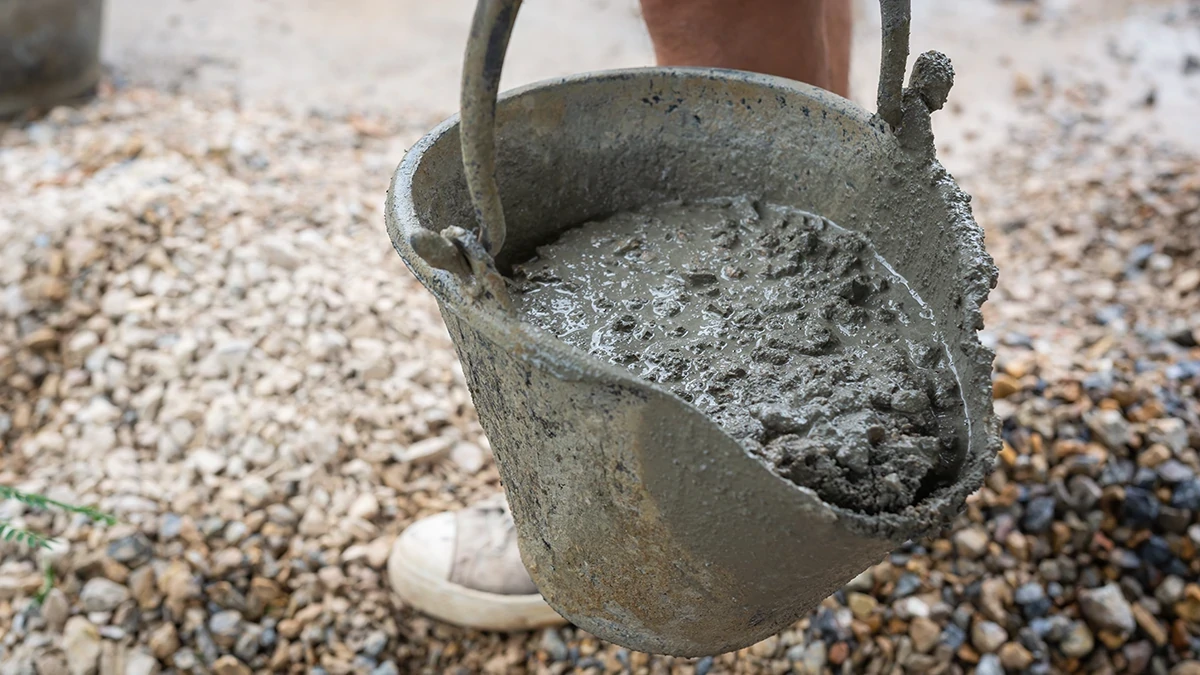
- Mechanical Transportation:
Mechanical transportation of concrete involves the use of machinery and equipment to move and place concrete efficiently. This method is commonly employed in large-scale construction projects where significant volumes of concrete need to be transported over distances or to elevated locations.
Concrete can be mechanically transported using various methods, including the utilization of concrete pumps, trucks equipped with concrete mixers, belt conveyors, and concrete buggies.
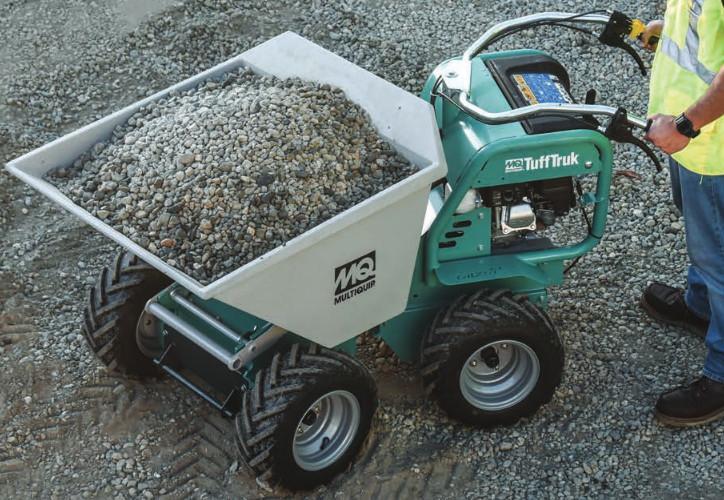
Also, read: What is Ready Mix Concrete?: Types of Ready Mix Concrete
4. Placing in the formwork
Once the concrete arrives at the site, it is placed on the formwork. After placing the concrete in the formwork, the necessary vibration should be carried out to achieve uniform distribution of the concrete content and reduce the formation of honeycombs. The placement is done manually or using the mechanical pump.
5. Removal of the formwork
When the concrete has fully set it is recommended to remove the formworks and shutter. Removing formwork can enable one to do the curing. The removal of formworks is done as follows: –
The Grade of Concrete is the maximum strength achieved by concrete after 28 days beyond which the concrete will fail to apply the load. The grade of the concrete is denoted as ‘M20’, where the ‘M’ is a mix of the concrete and ’20’ is the minimum compressive strength that the concrete can stand after 28 days.
The mix ratio of the concrete is indicated as 1: X: Y. Where 1 is the amount of cement X is the amount of fine aggregate and Y is the amount of course aggregate. For concrete grade M20, the ratio will be 1:1.5:3.
| Si.No. | Structural member | Formwork removal time |
|---|---|---|
| 1. | Footings | 24 to 48 hours |
| 2. | Columns | 24 to 48 hours |
| 3. | Beams | 24 to 48 hours |
| 4. | Slabs | 14 days |
Also, read: Removal Of Formwork | Stripping Of Formwork
6. Curing of Concrete
This is the final process in the concreting works. Curing keeps the concrete hydrated and allows it to achieve full strength by the concrete. Curing is the method of applying water to concrete.
FAQs:
-
Q: What is meant by cement concrete?
Answer: Cement concrete is concrete prepared from cement (OPC or PPC) as a binding material together with fine aggregate, coarse aggregate and water.
-
Q: What is cement concrete used for?
Answer: Cement concrete is used in all major construction projects such as buildings, bridges, sewage treatment plants, infrastructure, dams, towers, and many more.
-
Q: What are the steps involved in the concreting process?
Answer: The steps involved in preparing concrete are: –
1. Batching of the materials
2. Mixing of the materials
3. Transporting of concrete
4. Placing of concrete in the formwork
5. Curing of concrete
References:
- Bureau of Indian Standards. (2000). Code of Practice for Plain and Reinforced Concrete (IS 456:2000) (4th ed.)—Code of Practice. Bureau of Indian Standard (BIS).
- Duggal, S. K. (2008). Building Materials. (3rd ed.). New Age International (P) Ltd.
- Bhavikatti, S. S. (2010). Basic Civil Engineering. New Age International (P) Ltd.
- Chandra, Dr. R. (2018). Reinforced Concrete Structure(Limit State Design) (ISBN-13: 9788189401399): A Text-book of Reinforced Concrete Structures (3rd ed.). STANDARD BOOK HOUSE SINCE 1960.
- Wikipedia contributors. (2021, April 4). Concrete. Wikipedia. https://en.wikipedia.org/wiki/Concrete
- Wikipedia contributors. (2021, April 7). Cement. Wikipedia. https://en.wikipedia.org/wiki/Cement
![]()






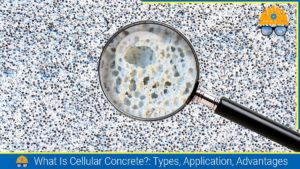
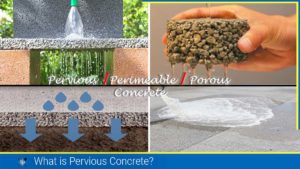
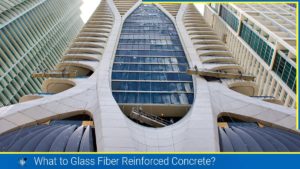
“Cement concrete” is a vital construction material made by mixing cement, water, and aggregates like sand or gravel. Cement acts as a binding agent, solidifying the mixture over time. It’s essential to know about cement concrete because of its:
Versatility: Used in diverse construction projects.
Durability: Creates long-lasting structures.
Strength: Offers impressive structural stability.
Economic Value: Cost-effective due to low maintenance.
Environmental Impact: Understanding its sustainability aids in Eco-friendly construction.
Birla White, a division of UltraTech Cement Ltd., offers an impressive range of surface finishing products based on white cement. The brand continually innovates to meet evolving consumer preferences and plays a significant role in shaping the construction landscape in India. Birla White is particularly renowned for its flagship product, WallCare Putty, known for its exceptional whiteness and quality.